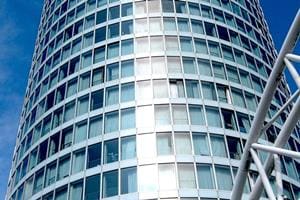When most people think about indoor air quality, they usually think about pollution. The first…

How Healthy is Your Building?
 The Environmental Protection Agency has received so many reports of sick building syndrome (SBS) cases that the agency now estimates that one out of four new or renovated buildings in the U.S. may be classified as “sick buildings.” This is why the chances are good that you’ve seen or heard the phrase “sick building syndrome” somewhere in the media over the past couple of years. But what exactly is SBS and what makes a building sick and how we became it healthy building?
The Environmental Protection Agency has received so many reports of sick building syndrome (SBS) cases that the agency now estimates that one out of four new or renovated buildings in the U.S. may be classified as “sick buildings.” This is why the chances are good that you’ve seen or heard the phrase “sick building syndrome” somewhere in the media over the past couple of years. But what exactly is SBS and what makes a building sick and how we became it healthy building?
SBS is defined as a range of ailments that appear to have no specific cause but that are strongly associated with the place a person works and that also tend to recur. This is quite different from building-related diseases that can be traced to a particular source-dust, mold, residual pesticides or asbestos, for instance.
Healthcare researchers and engineers now suspect that many cases of sick building syndrome may be rooted in building design and ventilation changes triggered by the 1970s energy crisis. A new emphasis on energy efficiency led to highly insulated “tight buildings” and reduced ventilation standards to 5 cubic feet of outdoor air per person per minute. By contrast, the American Society of Heating, Refrigerating and Air Conditioning Engineers now recommends that ventilation systems pump in 20 cubic feet of fresh air per minute for every person in office spaces.
Other experts believe that SBS may be caused by low-level toxins-such as carbon monoxide from garages, glass fibers from air duct linings and fumes from carpet cleaners or pesticides-that accumulate and trigger symptoms like fatigue, headache, dry, itchy skin, and irritated eyes, nose, and throat.
While both of these theories-inadequate fresh air flow and low-level toxicity-seem quite plausible, another group of researchers has found evidence that SBS may have more to do with psychological and social conditions in the workplace than the physical environment itself. They point out that people who work in high-stress jobs with little support appear to suffer from the condition the most. A 2006 study performed by British researchers and published in the journal Occupational and Environmental Medicine analyzed questionnaires submitted by over 4,000 study participants. The survey included questions about the participants’ social and demographic characteristics, the physical work environment, psychosocial characteristics of the workplace and any SBS symptoms.
There was some indication that the greatest environmental problems were due to temperatures outside the recommended range, airborne bacteria, dust and poor relative humidity. However, these were not statistically significant. The greatest association with SBS was due to psychosocial factors. The greatest number of symptoms was found in those who had little control over their work, who had an excessive work load, and who were exposed to social and mental stress at work.
Symptoms of sick building syndrome may include the following:
- Dull headaches
- Dizziness
- Nausea
- Aches and pains
- Excessive fatigue
- Vision problems
- Poor concentration
- Shortness of breath
- Coughing
- Wheezing
- Tightness in the chest
- Ear and throat irritation
- Irritated, congested or runny nose
- Skin irritation (rashes, dry itchy skin)
Symptoms may vary from day to day and can appear in different combinations. The risk of sick building syndrome is greater in healthy building with open plan seating, low humidity, poor ventilation, electrostatic charges, particles from dust, carpeting or cleaning materials, a dirty working environment and poor lighting that causes video screens to glare or flicker.
If you find yourself experiencing symptoms of sick building syndrome, discuss it with your coworkers to see if any of them may be experiencing similar symptoms. If so, consult with your employer about the possibility that working conditions may be causing your illness. Here are some steps you can take to help alleviate the problem and make the healthy building:
- If possible, open windows to get fresh air circulating throughout your workspace.
- Take regular 5- to 10-minute breaks from your computer screen, if you use one.
- Arrange your furniture ergonomically to avoid unnecessary stress on your back and arms.
- Organize your tasks and delegate work to reduce stress.
- Get regular exercise to maintain good general fitness.
- Follow a healthy diet and avoid sugary snacks.




